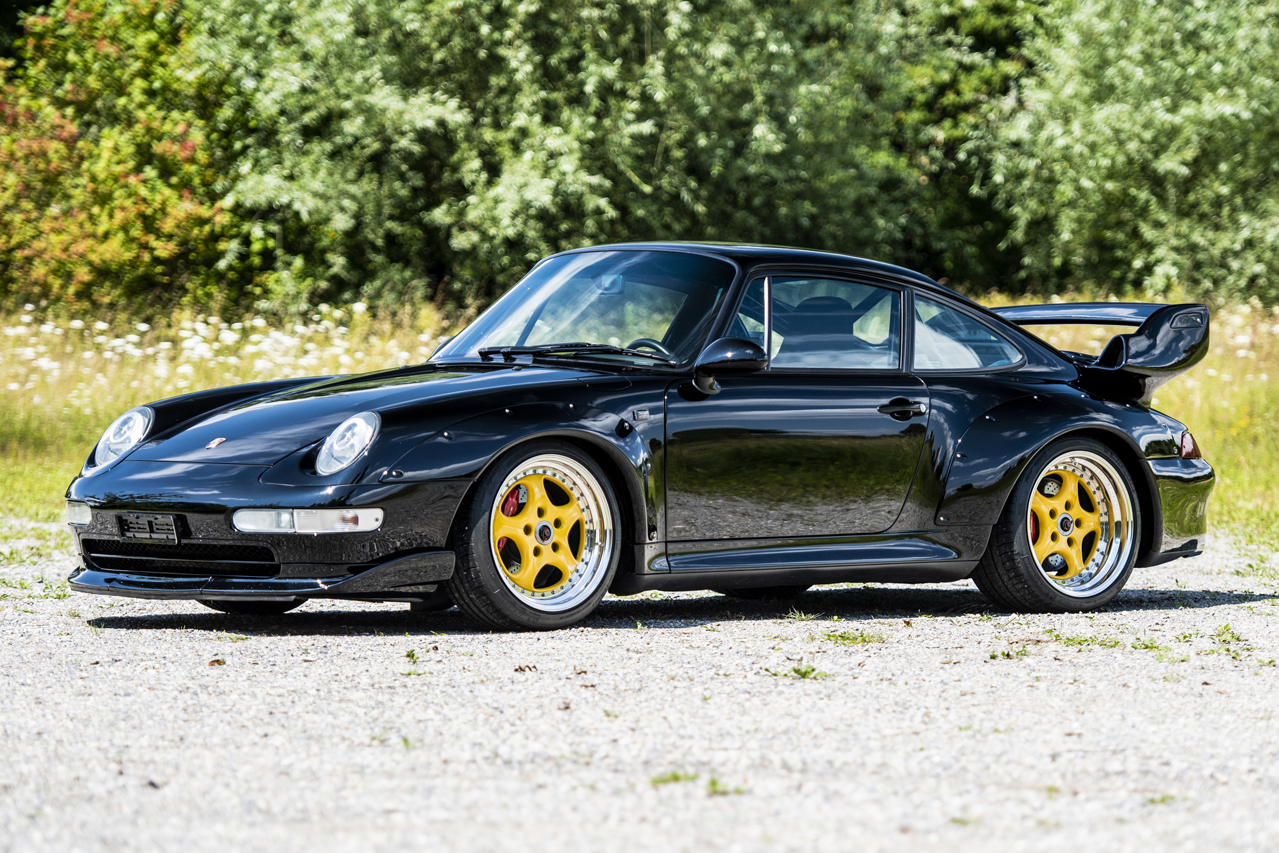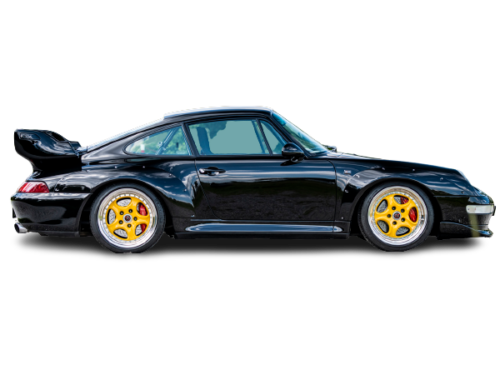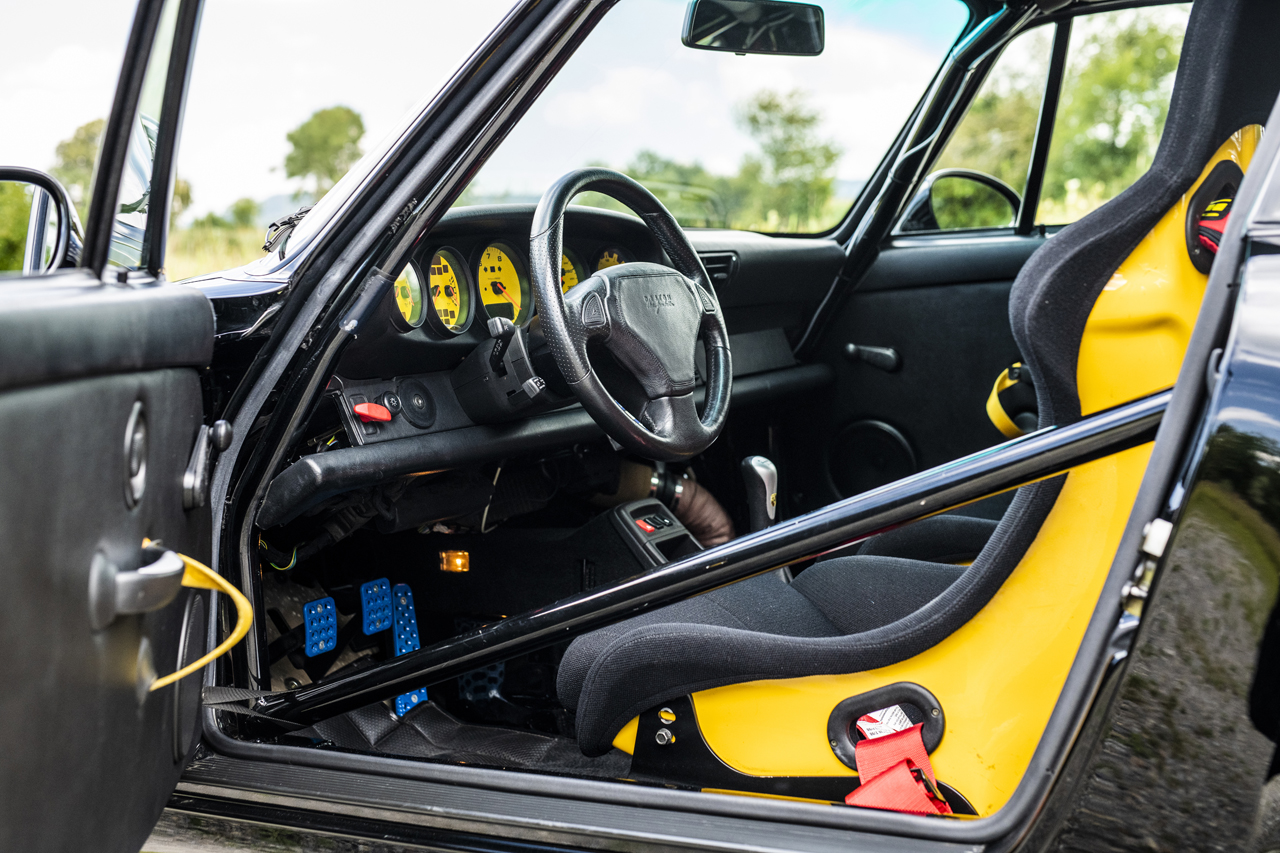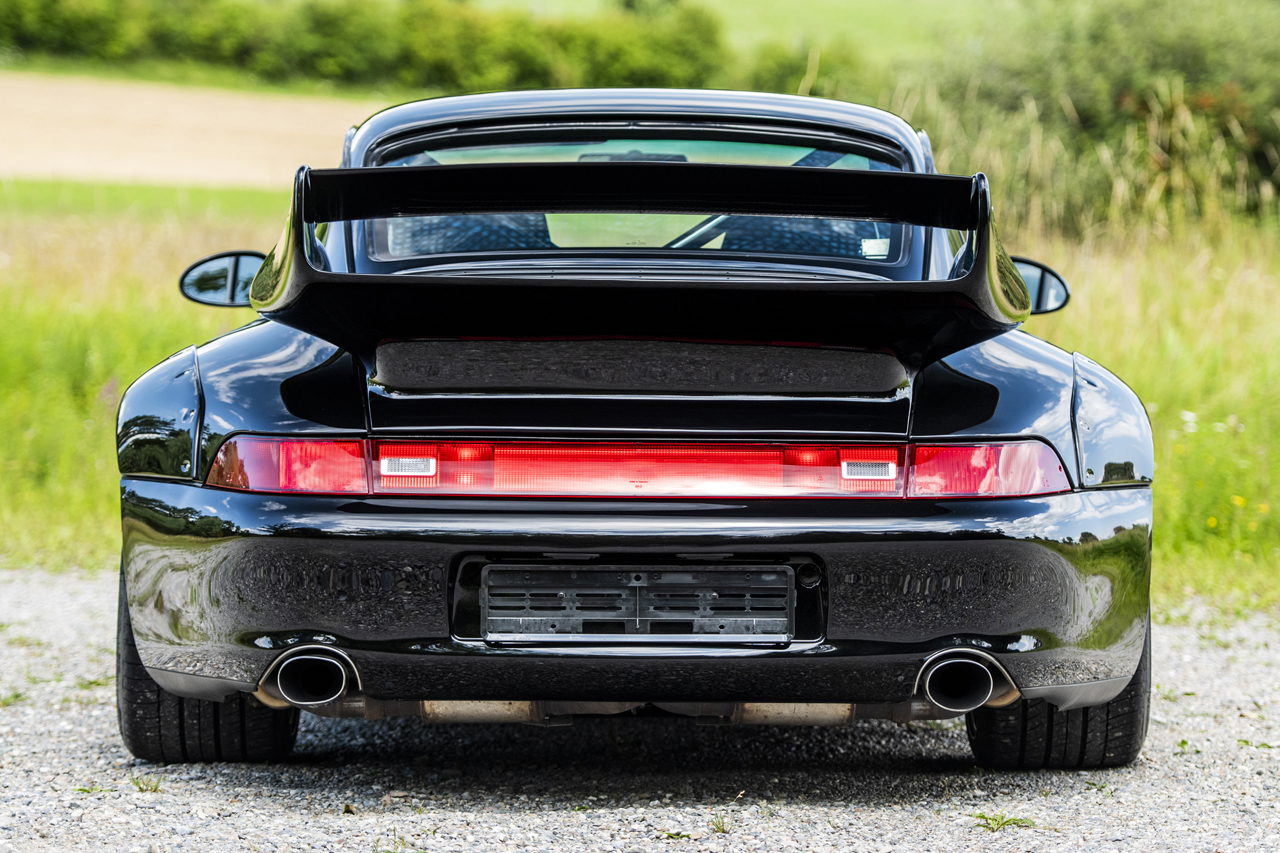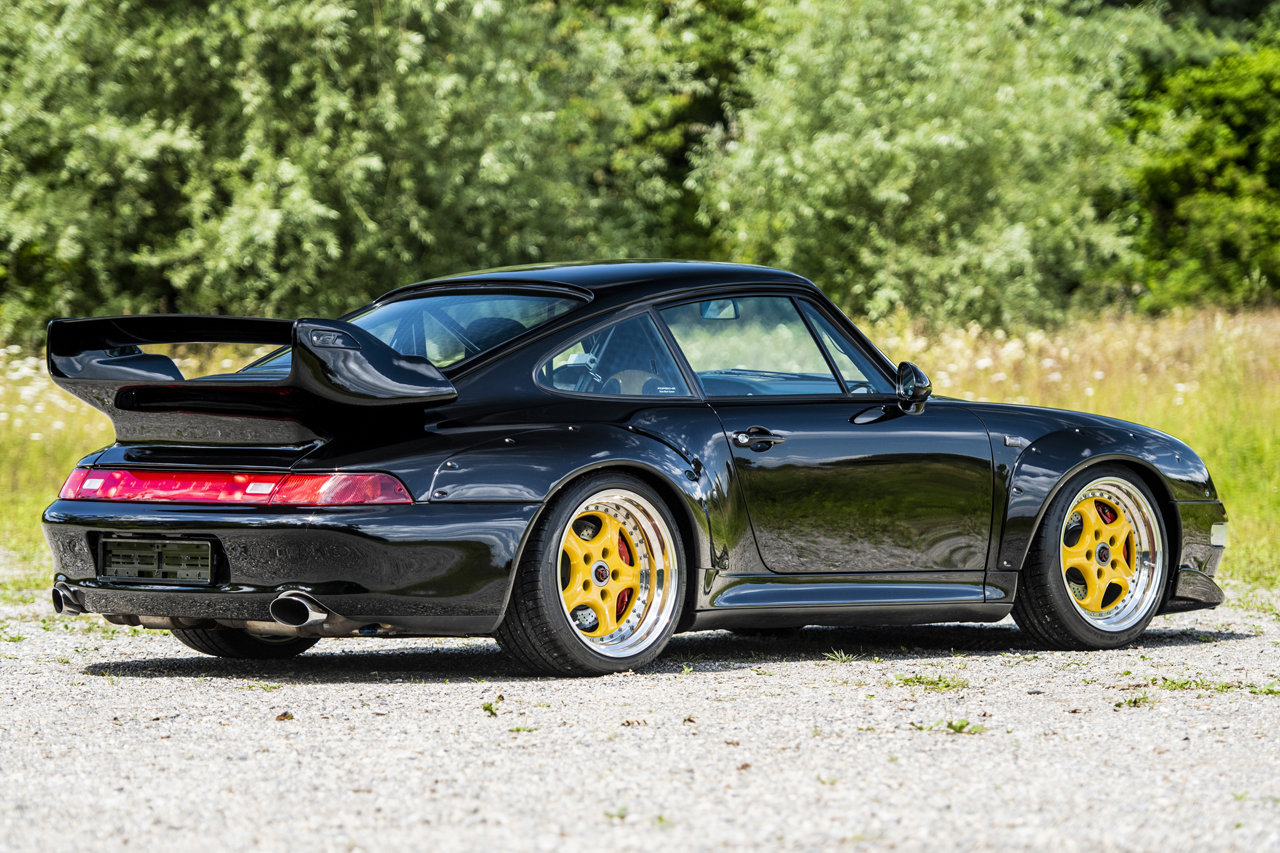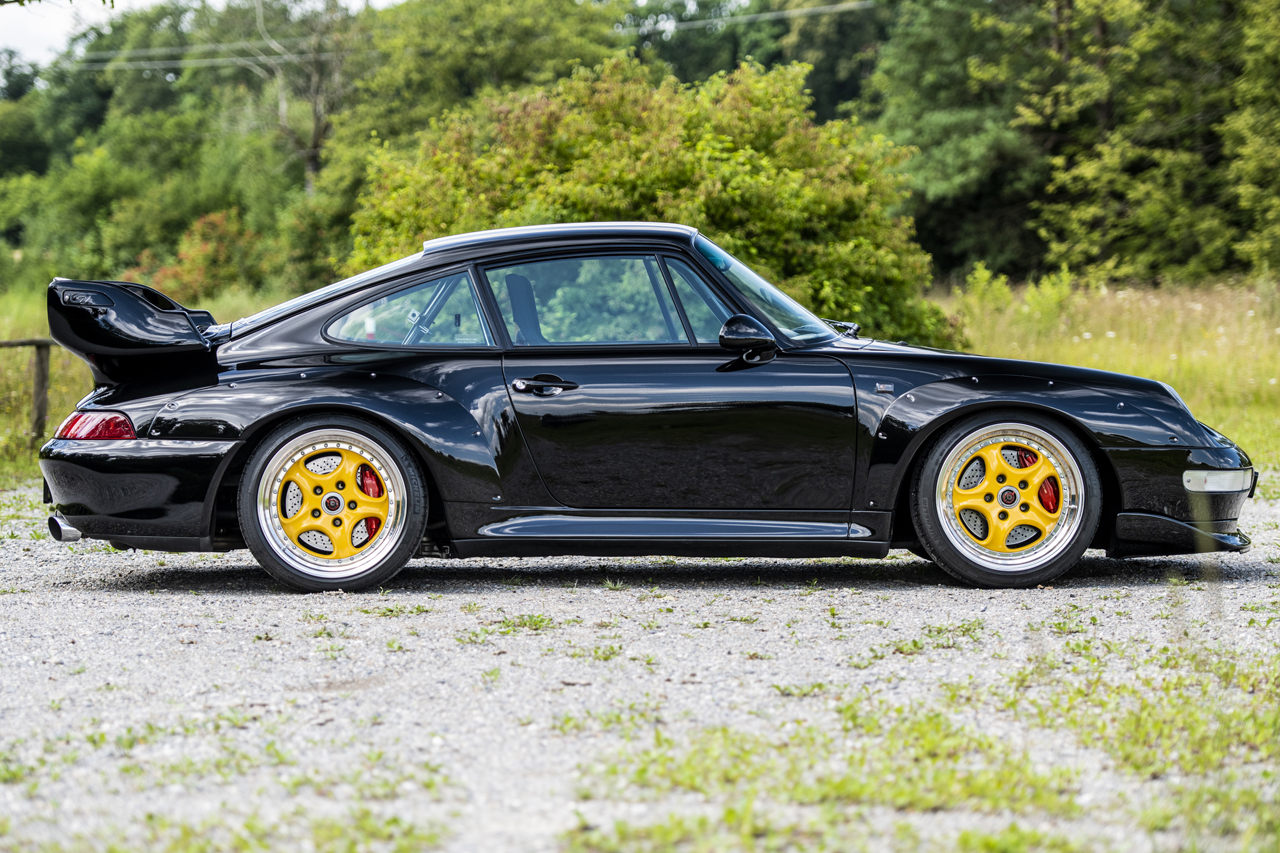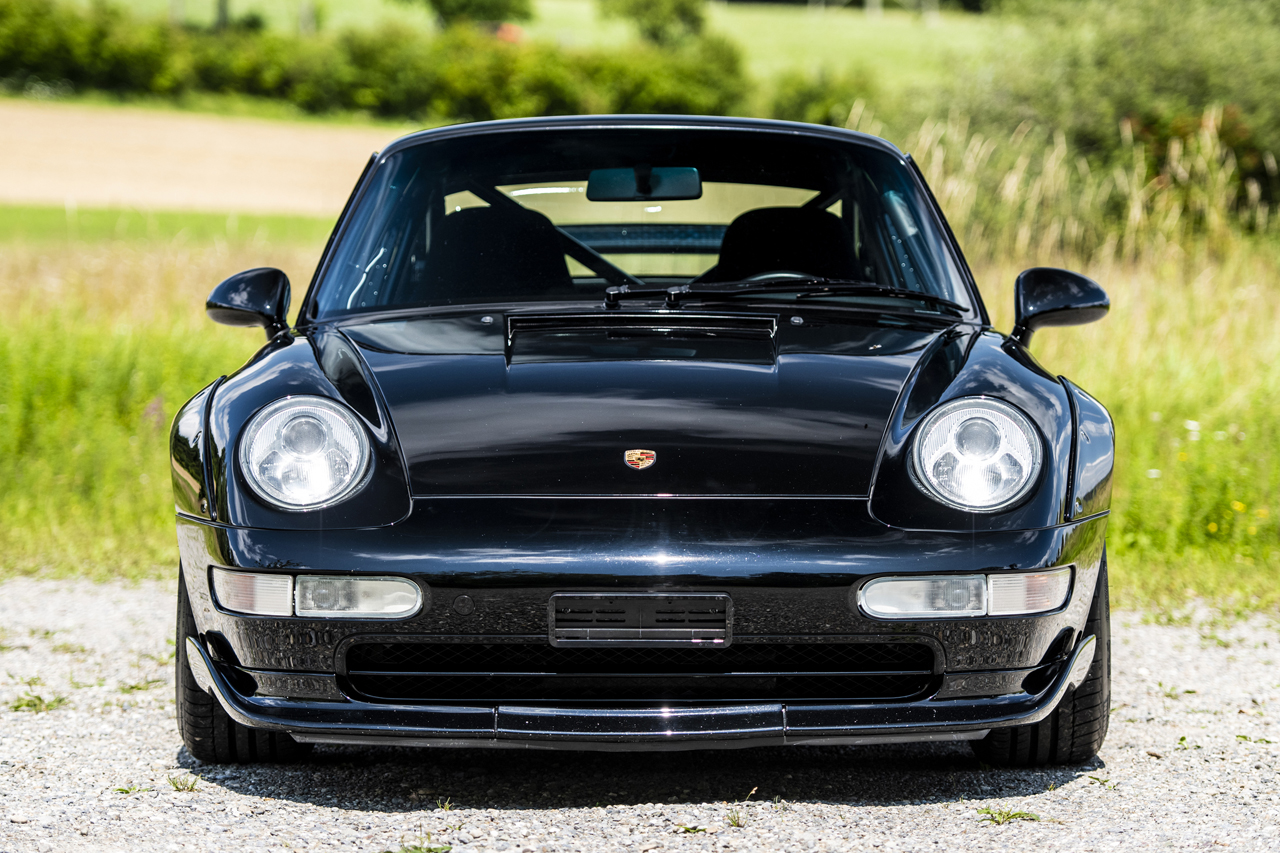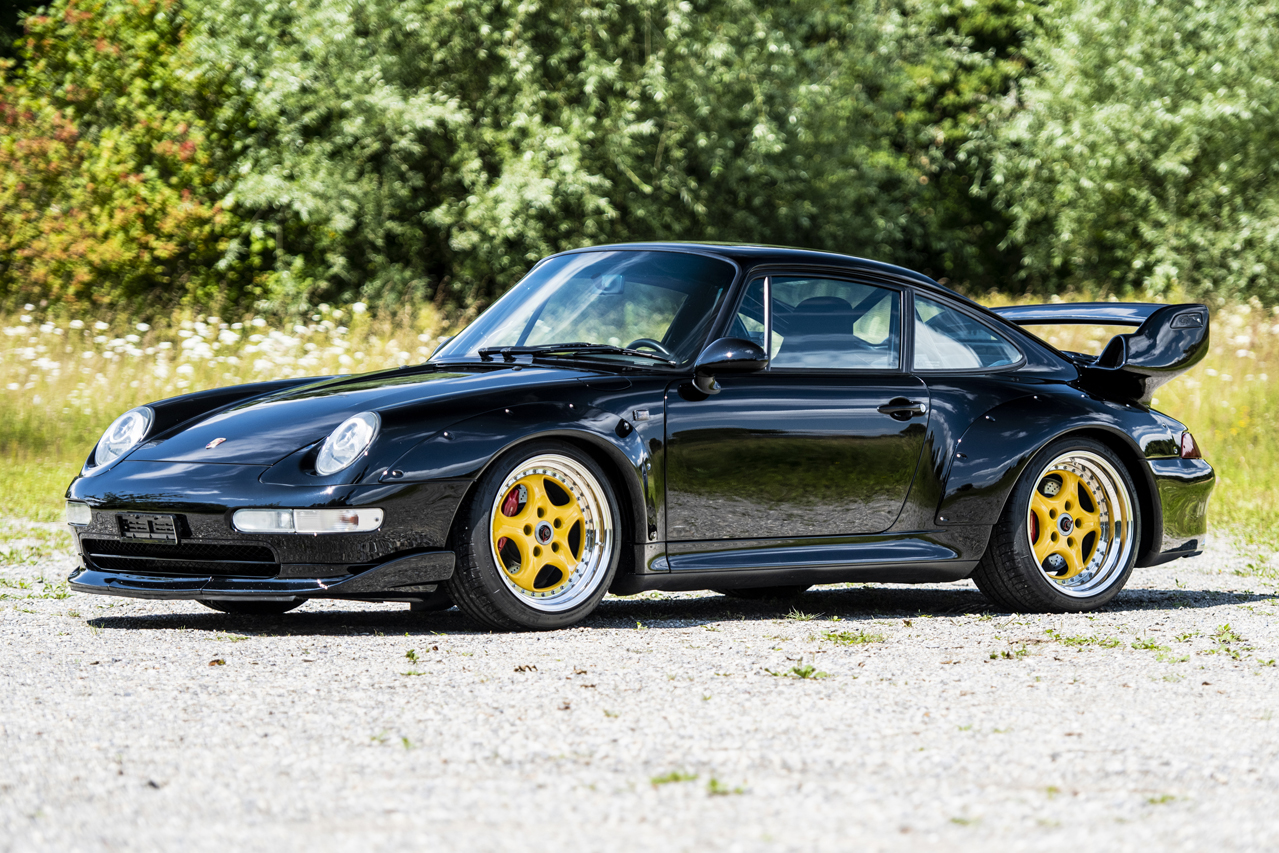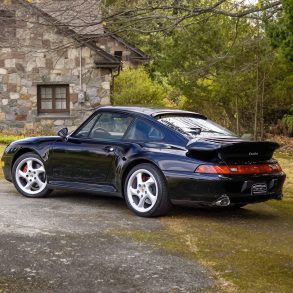(1995 – 1996) Porsche 911 GT2 Clubsport (993) – Ultimate Guide
The GT2 was the hardcore, race-focused version of the 993 Turbo, using essentially the same 3.6 L twin-turbocharged engine, but slightly modified with increased power output. The car was made to compete in the FIA GT2 racing class. Among this already very exclusive circle of 57 cars there is an even more rare community. 20 of the 57 road-legal cars were produced in a second – and last – badge with upgraded engine power (450 PS) called GT2 “Clubsport” which make them the last Porsche models with air-cooled engines. A substantial splitter, similar to that on the Carrera RS Clubsport, was fitted to improve the airflow around the front of the car, while the large adjustable rear spoiler had gaping inlets at the side that rammed air into the engine for better breathing.
To enable the GT car to be a class winner, Porsche took the 993 911 Turbo and lightened the chassis and body by over 200 kilograms, removing just about every creature comfort as well as the heavy all-wheel drive components. Thinner glass was used for the windscreen, and the bonnet and doors were sculpted from aluminium. Concurrently, power from the 3.6-litre engine was increased to 430 brake horsepower by increasing peak boost for the KKK K24 turbochargers to 0.9 bar. The results of the power increase and weight loss program speak for themselves: a 0-60 time of around 4 seconds and a top speed of 184 mph.
In spite of this, the GT2 was as much about handling as outright straight-line speed; each example is easily recognizable from the bolt-on flared wings, which not only enabled engineers to redesign the suspension geometry with a far wider track, but also to use significantly wider lightweight Speedline wheels (235/40 ZR 18 front and 285/35 ZR 18 rear). The resulting massive increase in mechanical grip was complemented by an aerodynamic package that included a revised front splitter and large rear wing to generate extra downforce.
Clubsport-specified cars took things even further with the addition of a welded roll cage, six-point racing harnesses, a battery cut-off switch, a full fire extinguishing system, and bucket seats. The overall potency of the package was confirmed by impeccable race pedigree, including two class wins at Le Mans and numerous successes in the hands of privateers in Europe, America, and all over the rest of the world.
All Photos Below from Remi Dargegen ©2021 Courtesy of RM Sotheby’s


